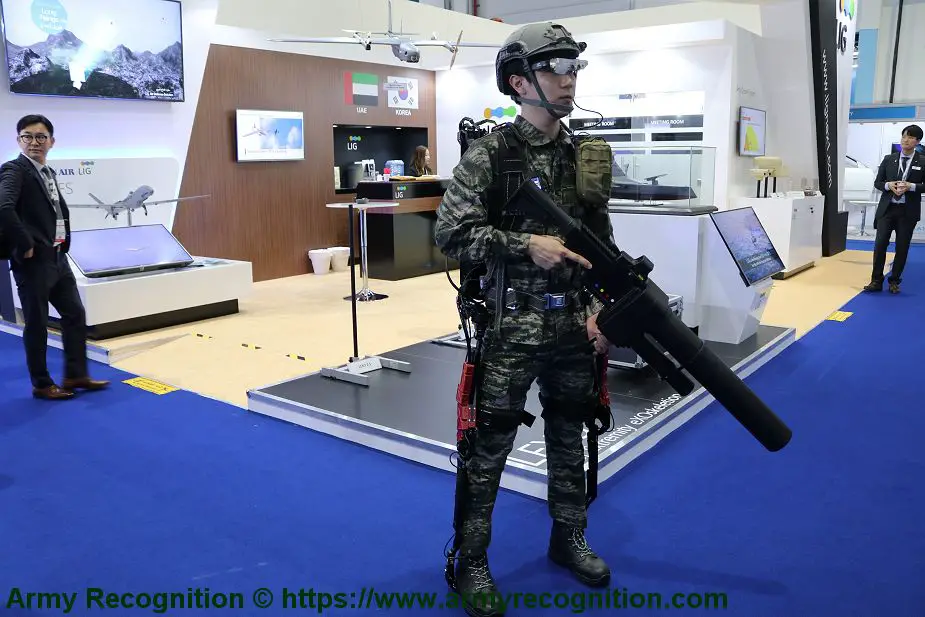Breaking news
UMEX 2020: South Korean Company LIG Nex1 presents its Exoskeleton Robot.
The South Korean Company LIG Nex1 presents its Exoskeleton Robot called LEXO (Lower Extremity eXOskeleton for Soldiers) at UMEX 2020, the International Unmanned Defense Systems Exhibition that takes place in Abu Dhabi, United Arab Emirates.

South Korean Company LIG Nex1 presents LEXO Lower Extremety eXOskeleton at UMEX 2020, International Unmanned Defense Systems Exhibition in Abu Dhabi, United Arab Emirates. (Picture source Army Recognition)
A powered exoskeleton is a wearable mobile machine that is powered by a system of electric motors, pneumatics, levers, hydraulics, or a combination of technologies that allow for limb movement with increased strength and endurance.
Today, armed forces around the globe forces explore commercial exoskeleton technologies for potential military applications, which can be used to support strength and endurance and protect soldiers from strain injury.
From physiotherapy to emergency services and now the military, exoskeletons can improve the current physical capabilities of a warfighter, allowing them to run faster, lift heavier objects and relieve strain on the body during physical operations.
Since 2010, the South Korean Company LIG Nex1 has been developing exoskeleton robot technology that maximizes operational performance by enhancing a soldier's muscle strength that is operable in various terrains. LIG Nex1 is developing technologies related to exoskeleton mechanisms, human¬robot interface technology, low-noise/high-efficiency miniature hydraulic devices and various sensors and control systems.
The Company LIGF Nex1 possesses technologies such as hydraulic power pack, sensor processing board and control algorithm. LIG Nex1 has been leading the way by differentiating the first developed exoskeleton robot, LEXO (Lower Extremity eXOskeleton for Soldiers}.
Currently, LIG Nex1 continues to expand on the first developed core technologies to expand usability of Exoskeleton Robot. The Exoskeleton Robot technologies are expected to contribute not only to military use but also to rehabilitation medicine, silver industry and agriculture.



















